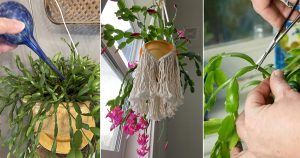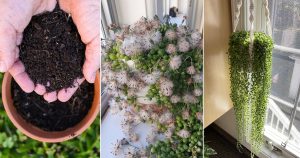Want tons of bright and beautiful rosettes? Here’s how to get more rosettes on Echeveria without repotting with super duper easy tricks!
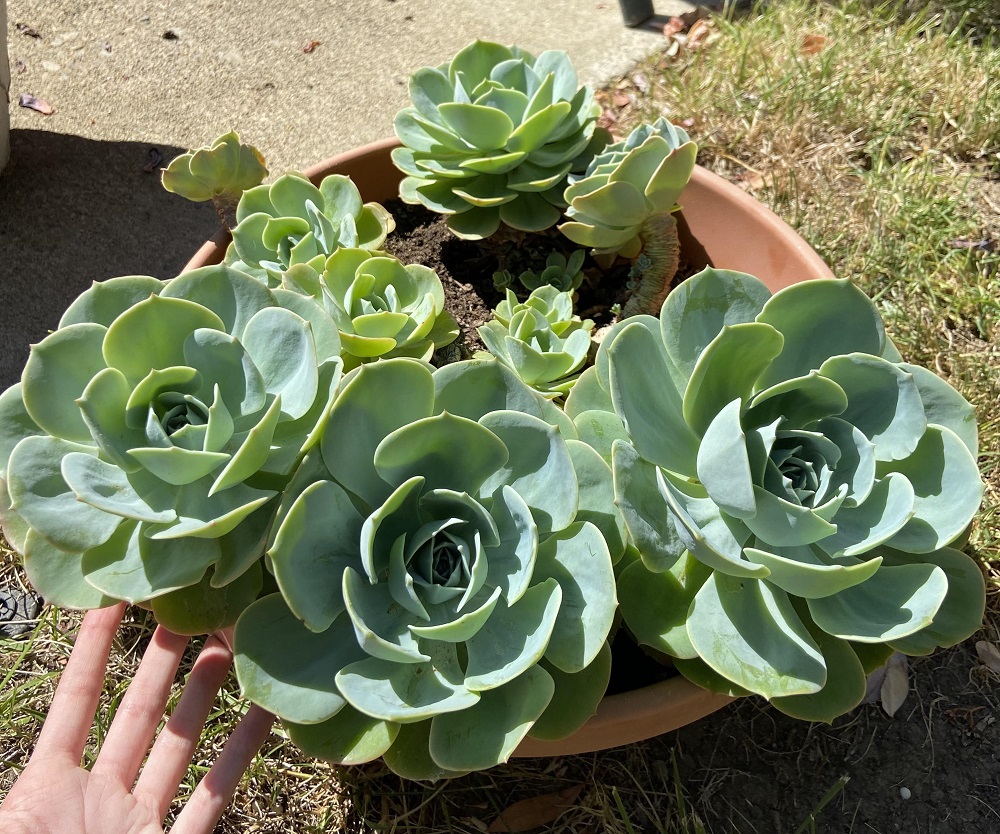
This gorgeous rosette succulent is famous for its stunning color range—from pale white to purple, blue, and even fiery red! So, if you’re aiming for more rosettes, here’s How to get more rosettes on Echeveria without repotting!
7 Easy Ways to Get More Rosettes on Echeveria Without Repotting!
1. A Lot of Bright Light
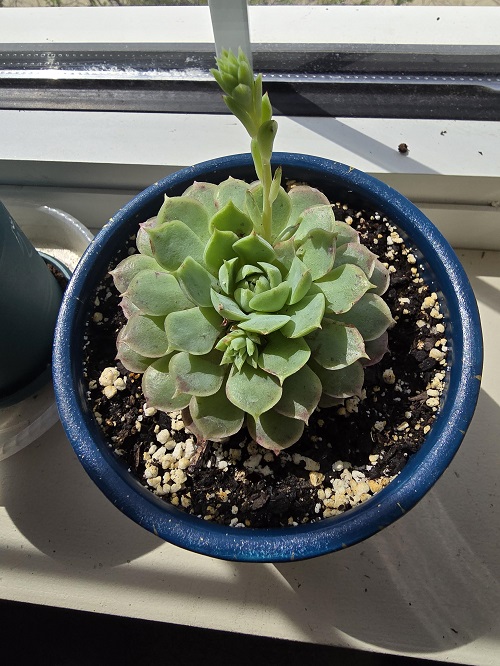
Straight from the parts of Central America, South America, and Mexico, Echeveria absolutely thrives in bright light. It’s no surprise—these plants are built for sunny, dry climates. To see more rosettes growing on your Echeveria, you should first read up on all about the type of location that your specific variety prefers.
For example, if you have either the ‘Afterglow’ or ‘Sahara’ varieties, you must grow them near the south-facing window to keep their rosettes nice and pink! The same goes for Echeveria ‘Gigantea’ and ‘Big Red’, which need 4 to 6 hours of direct sunlight.
One variety that will thank you for a little less light is the ‘Echeveria Doris Taylor’. It can get sunburned with too much sunlight.
Pro tip: If you do not have south or east-facing windows, you should invest in supplemental grow lights for more rosettes on your Echeveria.
2. Check for Plump, Firm Leaves
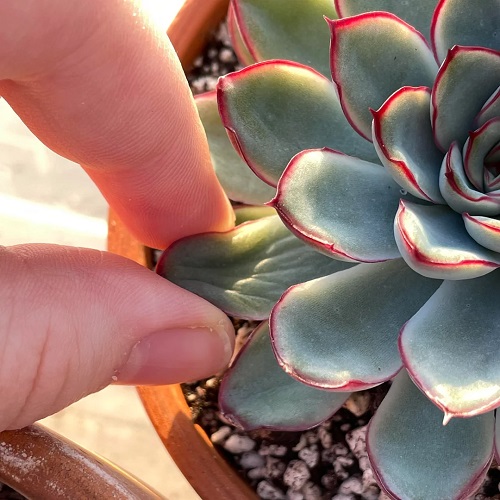
Before reaching for the watering can, check the soil—or better yet, check the leaves as overwatering is the enemy of succulents.
If the bottom leaves feel plump and firm, your plant’s doing fine. But if they’re soft or squishy, it’s probably overwatered. Stick to bottom watering and keep the rosettes dry—it’s a small step that makes a big difference. And don’t forget: drainage is everything.
3. Use the Right Soil Mix
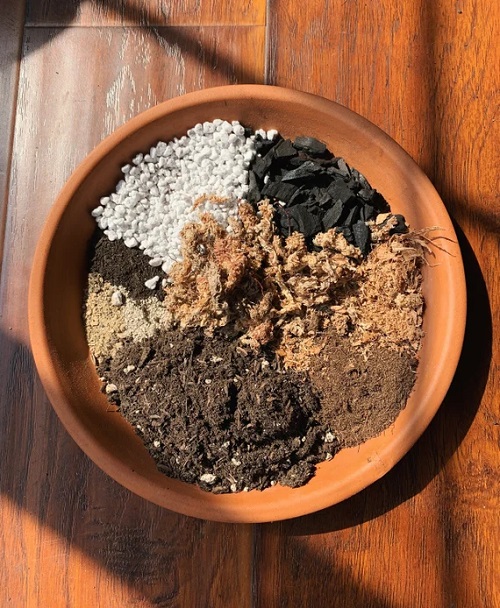
As a follow-up to the previous point, besides getting your watering right, you should also ensure excellent drainage. This is pretty important if you want your Echeverias to be growing nice and full.
Most standard cactus mixes work great, but if you’re up for a little DIY, try this: three parts regular potting soil, two parts coarse sand, and one part perlite. It’s the perfect blend for happy roots and vibrant growth.
4. Choose the Right Pot Size and Material
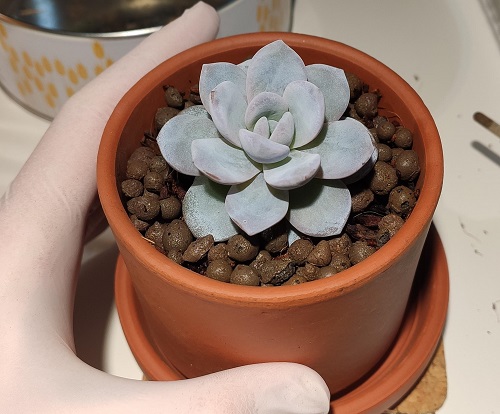
Been seeing less growth on your Echeveria and can’t seem to figure out why. Well, it’s not you, but it might be the pot! Both the size and material of the pot are exceedingly important for your Echeveria to produce new rosettes.
One mistake that beginners often tend to make is choosing a pot that’s too big. These tend to hold both more soil and more moisture, and we all know what that does (hint: overwatering and root rot). But going too small can also overcrowd the roots. The sweet spot of size for your Echeveria pot is just an inch or two larger than the plant’s diameter. This will give it enough room for your Echeveria to grow and reward you with new pups!
For material, choose terracotta or ceramic. Lightweight plastic pots are notorious for trapping excess water. On the other hand, terracotta not only removes excess moisture but also helps regulate soil temperature in outdoor settings.
5. Keep Away from Hot or Cold Vents
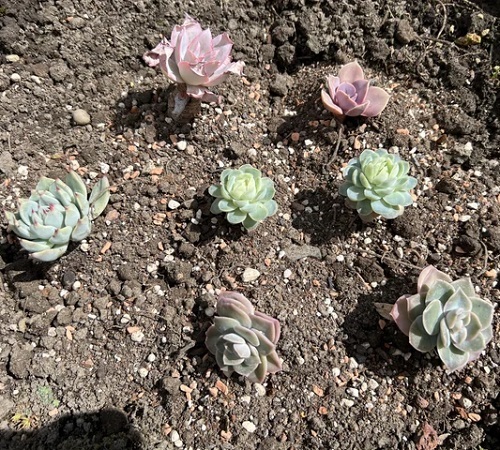
Fluctuating temperatures can be the bane of your pretty Echeverias as they thrive best in hot, dry conditions. While they can thrive in normal room temperature and humidity levels inside the house, there is one thing you must take care of: Always keep them away from hot or cold drafts. Additionally, you must also not grow them in overly humid rooms such as the bathroom or laundry room.
When growing Echeverias outdoors, remember they are cold hardy to USDA zone 9a. They can grow well in the ground where the average winter temperatures do not go below 50°F or 10°C. But for colder regions, it’s best to grow Echeveria as a houseplant.
6. Cut the Tops of the Rosettes
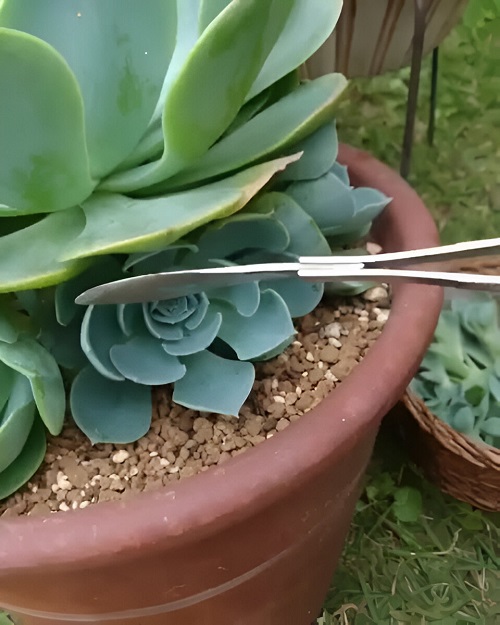
Sounds harsh, but hear us out! Topping off your rosettes (a bit like pruning) can actually spark new growth.
You can use clean, sharp shears and carefully snip the tops. Done right, this encourages new rosettes to sprout from the base. That said, it’s a delicate job. Cut too low and you could damage the plant. Cut wrong, and the top may fall apart. So take your time and go slow.
Important: This trick doesn’t work for every variety. Some, like Echeveria ‘Rubin’, grow super low and can’t be topped easily. In that case, stick with the other tips.
7. Remove Dried or Shaded Leaves Regularly
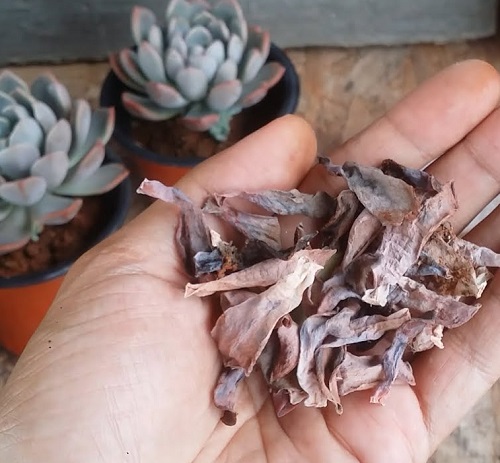
Dead, dried-up, or shaded leaves sitting at the bottom of your Echeveria may seem harmless, but they can block air circulation and take up space where new rosettes would love to grow. Gently remove these leaves by hand when they feel crispy and come off easily.
Don’t force them! This helps the plant redirect energy into new growth and gives room for fresh rosettes to pop out at the base.
Try out these 7 Easy Ways to Get More Rosettes on Echeveria Without Repotting! and we bet you will find it growing the most wonderful rosettes pretty fast! Let us know how it goes for you in the comments below.



